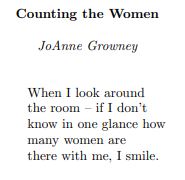As the year ends I have been revisiting books not seen for a while -- and one of them is Concert for Violin and Loneliness (Criterion Publishing, 2002) by the Romanian poet Mircea Goga (b. 1948). This collection was translated by Doru Radu and me. Here are several samples in which Goga uses mathematical imagery to enrich his poems.
Poems by Mircea Goga
Proportions
Like an iceberg
of which only an eighth is visible --
of death we show only
life . . .












